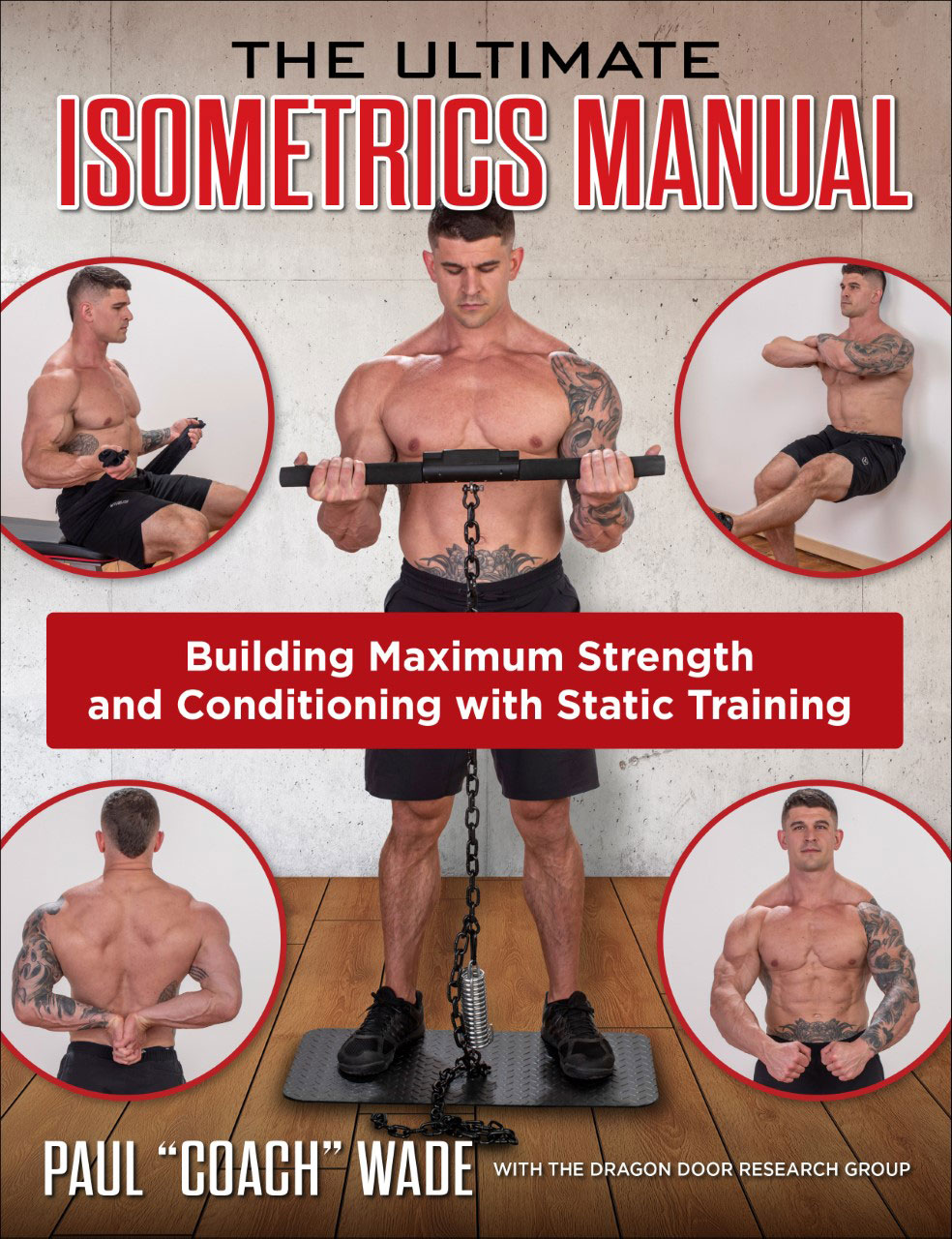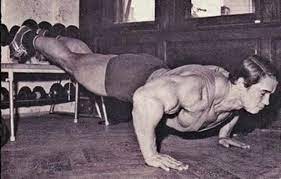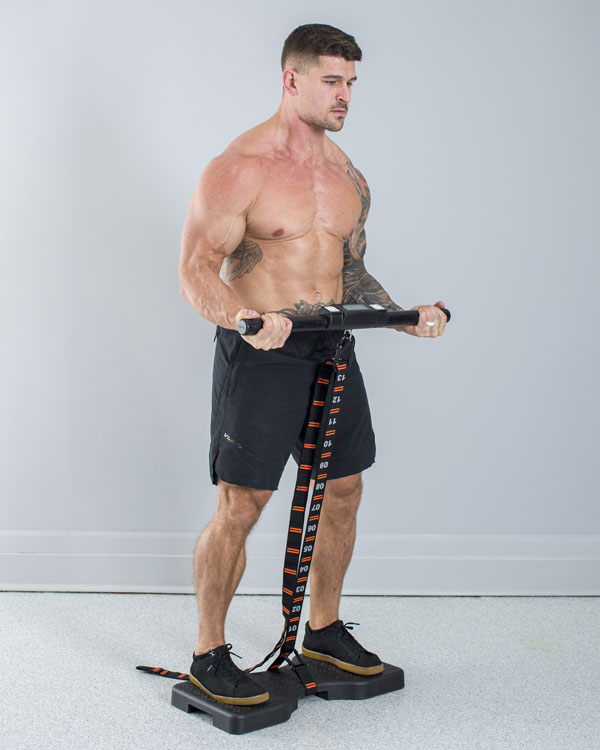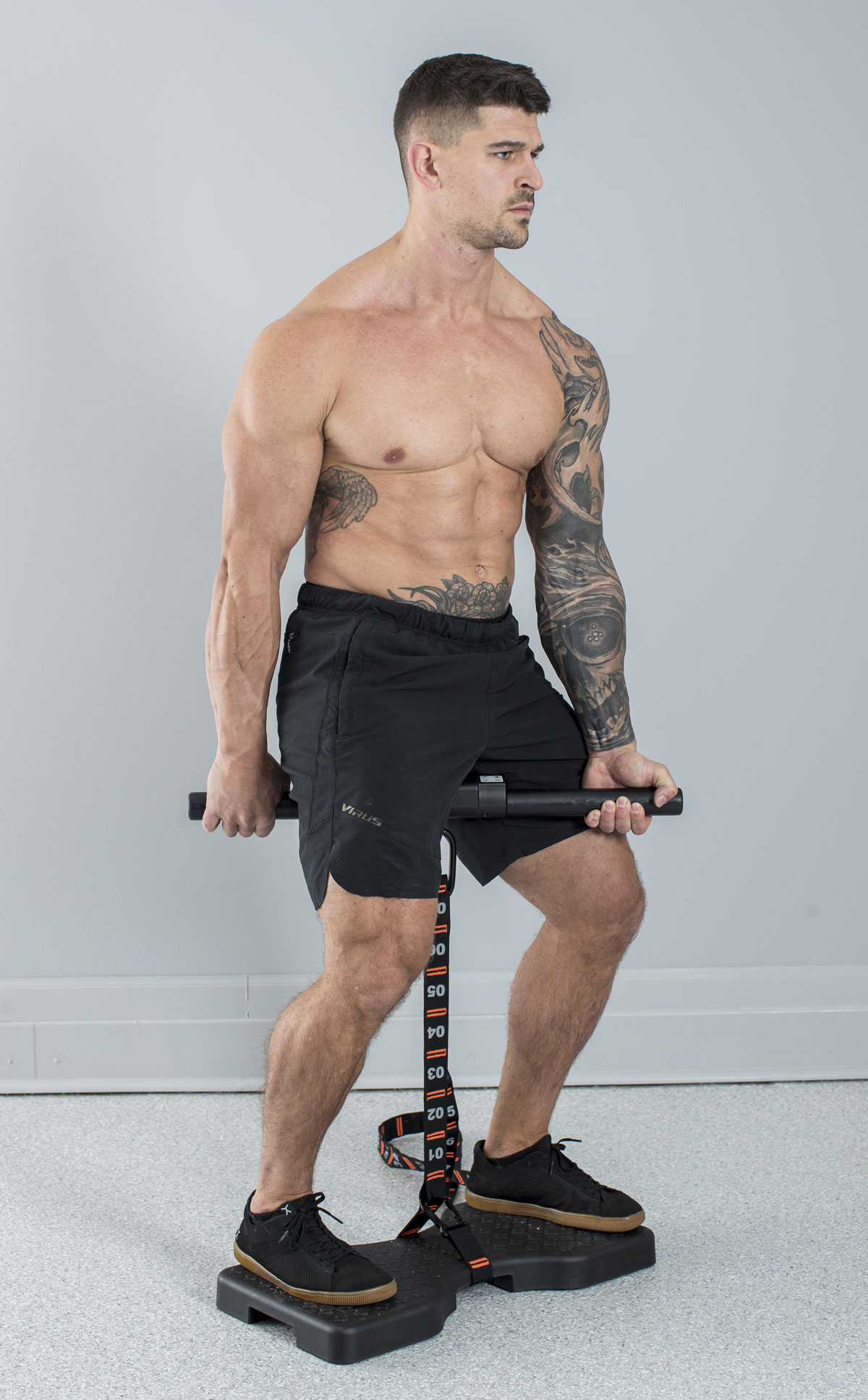New Year—New Isometrics
by Paul "Coach" Wade
Don’t panic, beautiful people. Uncle Paul’s not gonna throw yet another "New Year, New Me" article at ya. There are enough of those. This year, you don’t need to revolutionize yourself. Just change a few things, is all. Through the years, I’ve found that folks who have become frustrated with their training (or lack thereof) don’t need to reinvent the wheel—they just need to make a few changes.
Changing your training somehow relieves the mental pressure we inevitably put ourself under. It also banishes boredom, and engenders newer and newer ideas. More often than not, change is good for the body, too. It resets accommodation, and refreshes the joints and soft tissues; hell, the new stimulus often means more muscle, strength and ability, too.
So this year, why not change things up?
If you’ve been pumping iron all year, the best thing you can do to change is to add in some isometrics. Isometrics is not only a "change"—it’s a change for the better. It’s the absolute best mode of training—proven by science, time and time again—for strength and longevity. If you don’t know how to start, pick up a copy of our book,
The Ultimate Isometrics Manual.

This monster (over 450 large format pages) not only includes the comprehensive science and history behind isometric training, it also includes more exercises than any other isometrics book ever written—including exercises you can perform with zero equipment. Workouts galore, baby. Do yourself a solid and pick up a copy for the New Year. Better yet, make the best investment possible for your health and strength, and bag yourself an
Isomax.
What’s that, pardner? You’re
already performing Isochain/Isomax isos, and you understand the huge benefits they confer? Well, I’ve got ya covered. Here are five special tactics to shake up your training.
1. Explore unusual exercises.
Isomax work is king for basic compounds like deadlifts, squats and presses. But—over and over—these exercises can get boring. Guess what? They aren’t going anywhere—throw them out. Spend a solid month exploring exercises you have never performed before. Do nothing else!
-Swap the deadlift for the
hand-and-thigh.
-Want something heavier than squats? Try the infamous Austin squat—powerful enough to even thicken your bones:
-Been doing regular presses? Switch to old school PBNs (press-behind-neck):
-Been training your back with rows? Reverse all that. Find a secure overhead base and sling your strap over. Reverse grip isometric pulldowns will torch your lats AND biceps. (TIP: If you find you are pulling yourself UP, lengthen your hold times. One minute plus will set your damn back on fire!)
It’s human nature to stick with the same handful of drills we know, but that’s a damn shame because there are dozens more weird and wonderful drills to be explored. Why not discover some yourself? This kind of experimentation will not only help you get the most out of your Isomax, it will also add some killer new techniques to your arsenal—which may stay with you for good.
2. Go hybrid.
One form of workout my own students have had great success with is a hybrid of bodyweight isometrics held for time, combined with briefer and more powerful Isomax lifts.
During your Isomax workout—perhaps between exercises—drop and hold a pushup in the top position for ten seconds. This is a brilliant way to work your core, shoulders, arms, and even your thighs. Keep tight.
 Need to make pushup holds harder? Bend at the arms, or raise the feet. Or do both.
Need to make pushup holds harder? Bend at the arms, or raise the feet. Or do both.
At another point, sit against the wall in Samson’s seat. Again, hold for ten seconds. This is a killer for the legs, glutes, calves and hips. Add one set each per session, until you are doing five sets of seats and five sets of pushup planks. From there, add five seconds to each hold every session, continuing for as long as you can handle the progression (if you can get to a minute each—added to your regular workout, remember—I salute ya). You don’t need to record these added bodyweight holds, although you can if you want. Just keep track of the number of holds and the time on a leaf of paper, or on your phone’s notes app. This sounds simple, but, ladies and gentleman, this is supercharged isometrics. You won’t believe what this does for your fitness and overall conditioning!
3. Specialize
You ARE working your whole body in your program, right?
Stop.
For just a month or two, work ONLY your weakest area. Pick a solid workout of at least ten sets, and perform it every other day. Is it biceps? Perform five 30 second holds of curls in the mid-range, traying to beat your average when you can.

Follow it with five 20 second holds of bent-over curls. (A true "secret weapon" for biceps growth—try it!)
Press way behind your squats and deads? Three 6 second holds at the top, three midrange, three at the bottom. Finish with one random height press for 30 seconds to burn out.
The power of consistency is a truism. But sometimes, crazy can work. You’d be surprised how quickly one month working just one area will level that area up, and the rest of your drills won’t fall back as much as you might think—remember, every isometric drill is a total-body exercise!
If you want to move forward in life, change is key. Here, I’ve given you ten ways to change your training. Things going slow? Training a grind? Pick one. Any one. Hell, pick one at random, and work with it for 6-8 weeks. You’ll be amazed what you learn, and you’ll be a better version of yourself before you know it.
4. Work asymmetrically
Every Isomax drill is a total-body drill. This is because you can develop so much tension during isometrics—due to the
force-velocity curve—that your nervous system recruits the rest of your body to help out. (This is called
Sherrington’s Law of Irradiation.)
That said—nothing is stopping you from exploring asymmetrical training. I was recently contacted by a Dragon Door athlete who has made some MASSIVE gains in strength an athleticism, just by devoting a phase of his program to
asymmetrical work. What’s asymmetrical work? Instead of holding the bar with both hands, and pushing with both legs, do things differently. For example:
-Deadlift using one leg—great for "strength balance", and possibly the world’s best exercise for powerful feet.
-Try a modified Zercher lift—instead of putting the bar in the crook of both elbows, only use one elbow, and one overhand grip. Very unusual, powerful stimulus.
-Perform presses with one underhand grip, one overhand. The palms-in grip can exert less force, making the other arm work harder. (This can be used on pullover too, and all biceps and triceps drills.)
-Squat with the bar perpendicular to your torso—one end over your shoulder, holding on to the other end in front of you. Painful, but effective.
-Curl with one hand close to the center of the bar, the other barely holding on to the outer edge. The same works for triceps presses.
-Try a Jefferson lift; with the bar between your legs, grab one side of the handle from the back, one from the front. Builds amazing strength as well as twisting power in the hips and torso.

-Perform single-leg calf raises with the bar chambered on your shoulders; or stagger the feet, one in front of the other.
There are other ways you can rock this—as always, explore!—but you get the picture. As you would expect, always repeat an asymmetrical exercise in reverse for the same volume to work everything equally. Two months of hard effort on a completely asymmetrical routine will bulletproof the small stabilizers, the deep tissues, as well as the muscles which criss-cross the trunk and are responsible for true, freakish, REAL-WORLD strength.
And there you have it. Most of the athletes I speak to are in a slump because they repeat the same patterns, year-after-year. Make some changes in the upcoming year—and drop me a line to tell me how awesome you’re doing.
Back